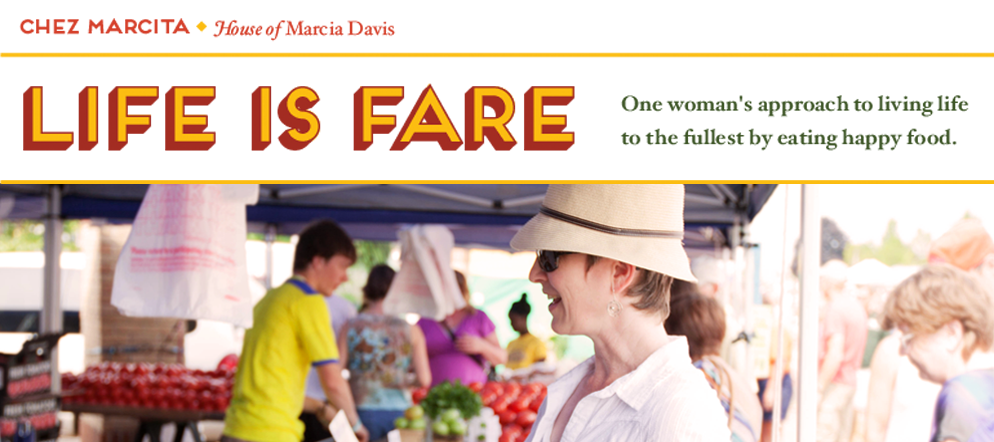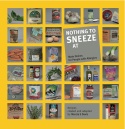As I’ve said before, Sunday is a good day to cook those meals that need attention over a longer duration than, say, the 30 minutes you might want to spend on a weeknight if you work full time or do lots of family activities in the evenings.
This roast chicken recipe from an October, 2000 issue of Real Simple magazine is, in fact, quite simple because you put the vegetables in the same pot so it’s all cooked together. The chicken came from Tom Carey at Lubbers Farm. (Notice how the drumsticks are tucked into the skin of the torso? The chicken came that way from Tom–a very nice touch.) And the root vegetables? Local, of course–from the Holland Farmers’ Market.
Yesterday when I made it, I basically followed the recipe as is, with the following exceptions. (I can’t help it–I’m a rule-breaker by nature. Or maybe I’m just lazy?)
1. No Twining, Please
What is the point of tying a chicken’s legs together with twine, especially if you’re stuffing it with lemon, garlic and rosemary? I actually like the cavity left open so the juices can run out while it’s roasting. Besides, you just have to cut the twine when you’re ready to carve the chicken. Could somebody let me know the purpose of this step?
2. Roasting Pan = Grease in the Oven
This recipe calls for a roasting pan. Even though I have a very large Le Creuset roasting pan that works well for this purpose, I prefer to use my Le Creuset Dutch (“French”) oven for two reasons: (a) I think less grease spatters in the oven with the higher sides of a Dutch oven; and (b) the Dutch oven has a lid, which I put on while it rests, after it comes out of the oven.
My grandmother used to put a lid on her roast chickens, too. She always said a chicken is done when it’s falling off the bone. I tend to agree. So what if the vegetables are a little crowded? It all works out in the end.
3. How Long Can You Cook a Chicken at 450 Degrees?
The recipe says to roast the chicken at 450 degrees for 45 minutes, then add stock and cook for approximately another 1 1/2 hours. I seriously think the next step should say, “Turn oven temperature down to 350.” Is there a mistake in the recipe? Wouldn’t the chicken burn up or at least dry out? To be safe, I opted to turn the temperature down to 350 after the first 45 minutes. And guess what? One and a half hours later, the chicken–a 4.5-pound bird in this case–was done.
Here’s the recipe, if you’d like to try it (cut ingredients in half if you only roast one chicken).
Lemon-Garlic Chicken with Caramelized Vegetables
(2) 3 1/2- to 4-pound chickens, whole
2 garlic heads, cut in half horizontally
2 small lemons, cut in half
5 sprigs fresh rosemary
2 8-inch pieces cooking twine
6 tablespoons olive oil
1 large aluminum roasting pan, or two smaller ones
12 small carrots, scrubbed (not peeled) and cut into 1-inch pieces (6 cups)
8 medium parsnips, scrubbed (not peeled) and cut into 1-inch pieces (6 cups)
20 small Yukon Gold or baby russet potatoes, cut in half (6 cups)
5 medium onions, cut into eights (6 cups)
1 tablespoon salt
1 teaspoon pepper
1 cup chicken stock or broth
Heat oven to 450°F.
Wash the chickens with water, pull off the excess fat, and pat dry. Rub each chicken all over with a garlic half. In each cavity, place the garlic half, 2 lemon halves, and 2 sprigs of rosemary. Tie the legs together with twine.
Rub each chicken with 1 tablespoon of olive oil and season generously with salt and pepper. Place in the roasting pan.
In a large bowl, combine the carrots, parsnips, potatoes, onions, remaining garlic halves, remaining rosemary (leaves only), salt, pepper, and remaining oil. Toss together well and place in roasting pan all around the chickens (or divide the vegetables between the smaller pans). Roast for 45 minutes.
Pour the stock over the chickens and vegetables. Continue to cook for another 1 1/2 to 1 3/4 hours, basting the chicken and stirring the vegetables every 30 minutes. When cooked through, the chicken will register 190°F in the thigh and 180°F in the breast on an instant-read thermometer. Transfer one of the chickens to a serving platter and let rest for 10 minutes before cutting. Remove about half the vegetables and place around the chicken.
Serves 4.






Just what is happening when a baked chicken is “resting”?
I’d like to know the answer to that, too, Sue. I just did some Googling about it but didn’t find an immediate answer. “Joy of Cooking” says to let chicken rest to make carving easier. I know red meat continues to cook even after you remove it from the heat source, so it’s good to be a bit underdone before you let red meat rest. I thought I read that poultry doesn’t continue to cook after it’s out of the oven. So maybe “Joy of Cooking” is right?
This is from Cook’s Illustrated. It refers to beef and pork, but I’m thinking that resting chicken also allows the juice to reabsorb?
A final but very important step when cooking all red meat and pork is a resting period after the meat comes off the heat. As the proteins in the meat heat up during cooking they coagulate, which basically means they uncoil and then reconnect in a different configuration. When the proteins coagulate, they squeeze out part of the liquid that was trapped in their coiled structures and in the spaces between the individual molecules. The heat from the cooking source drives these freed liquids toward the center of the meat.
This process of coagulation explains why experienced chefs can determine the “doneness” of a piece of meat is by pushing on it and judging the amount of resistance: the firmer the meat, the more done it is. But the coagulation process is apparently at least partly reversible, so as you allow the meat to rest and return to a lower temperature after cooking, some of the liquid is reabsorbed by the protein molecules as their capacity to hold moisture increases. As a result, if given a chance to rest, the meat will lose less juice when you cut into it, which in turn makes for much juicier and more tender meat.
Thanks, Kate, for sharing this information from Cook’s Illustrated!
The traditional step of tying the chicken legs together serves to keep the chicken in a neat shape as it cooks, I think. If you don’t do it, some chickens (though not all, I’ve noticed, and it also depends on the cooking vessel) sort of spread their legs apart, and a cooking instructor once told me it looked “indecent.” 🙂
Thank you, Clotilde! I will be sure to keep my Thanksgiving duck’s legs tied together when I roast it tomorrow!